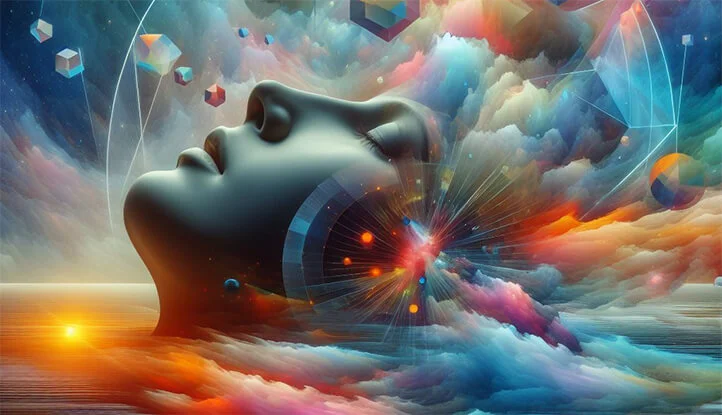Hypnagogic Hallucinations are vivid, often bizarre visual, auditory, or tactile experiences that occur in the state between wakefulness and sleep. Mysterious by nature, hypnagogic hallucinations have evoked both awe and fascination in humanity for centuries, giving rise to numerous theories and interpretations about their origin and meaning.
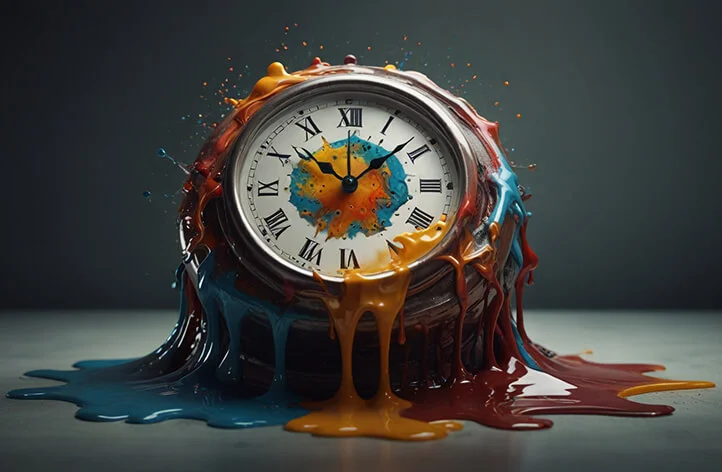
What are Hypnagogic Hallucinations?
The state between wakefulness and sleep is a mysterious realm where reality and imagination intertwine. It is here that hypnagogic hallucinations are born—strange images, sounds, and sensations that seem completely real but are actually created by our minds. These unique experiences are unmistakable and continue to captivate and intrigue.
Hypnagogic hallucinations are vivid visual, auditory, or tactile phenomena that occur in the transitional state between wakefulness and deep sleep. At this moment, our consciousness hovers in a kind of “suspended” state, where some areas of the brain begin to shut down for sleep, while others responsible for perception and imagery remain active. This unique combination of factors gives rise to the extraordinarily realistic and detailed hallucinations that people can see, hear, or feel.
Definition and Characteristic Manifestations
Hypnagogic hallucinations are bright and often bizarre sensations that arise on the boundary between wakefulness and sleep. This mysterious phenomenon, known to humanity for centuries, has attracted the attention of philosophers, scientists, and creative individuals, all of whom have sought to understand its nature. Although hypnagogic experiences are fleeting, they are strikingly realistic and can leave an indelible mark on memory.
In this extraordinary transitional state, people can experience stunning visual, auditory, and even tactile sensations with no real source. They may see vivid images and scenes, hear sounds and voices, or feel touches or movements that seem entirely real. Strange patterns, giant figures, and distorted perspectives—all are part of the incredible world of hypnagogic hallucinations, a realm accessible to only a select few.
Differences from Hypnopompic Hallucinations
It is important to distinguish between hypnagogic hallucinations, which occur during the process of falling asleep, and hypnopompic hallucinations, which occur upon awakening. Hypnopompic hallucinations can also be vivid and realistic, but they emerge during the reverse transitional state—from sleep to wakefulness.
Frequency of Occurrence
While statistics are imprecise, studies suggest that hypnagogic hallucinations are a relatively common phenomenon. Some estimates indicate that about 25-30% of the population regularly experiences them at different stages of life. However, many people do not realize or forget about these experiences due to their fleeting nature.
The frequency of hypnagogic hallucinations may increase with age, during periods of stress, sleep deprivation, or in the presence of certain medical conditions.

Causes of Hypnagogic Hallucinations
Hypnagogic hallucinations are a mysterious phenomenon rooted in the complex processes occurring in the human brain. Over the years, scientists have tried to unravel the mystery of these vivid, bizarre experiences, situated at the intersection of reality and imagination. Research has shown that hallucinations result from a combination of physiological, psychological, and other factors, intricately interacting with one another.
To understand the nature of this phenomenon, it is necessary to look inside the brain and trace the changes that occur during the transition from wakefulness to sleep. In this intermediate period, there is specific activity in certain areas of the brain responsible for forming images, perception, and sensory information processing. At the same time, there are changes in levels of neurotransmitters, which play a crucial role in regulating sleep and wakefulness.
Physiological Causes
Hypnagogic hallucinations are driven by complex physiological processes in the brain during the transition from wakefulness to sleep. In this intermediate state, there is unique brain activity that differs significantly from both wakefulness and typical sleep. Scientists have discovered that these specific brain activity patterns create favorable conditions for the appearance of bizarre hallucinatory experiences.
To better understand the physiological basis of hypnagogic hallucinations, it is necessary to study the processes occurring at various levels of the brain—from sleep stages and neural network activity to changes in neurotransmitter levels. This combination of factors results in some brain regions responsible for perception and imagery remaining active, while others begin to “shut down” as the brain transitions into deep sleep.
- Brain Activity. During the transition to sleep, certain areas of the brain, such as the visual cortex, auditory centers, and areas involved in imagery formation, remain active, which can lead to hallucinatory experiences. Studies using functional magnetic resonance imaging (fMRI) and electroencephalography (EEG) have shown heightened activity in these zones during hypnagogic hallucinations.
- Neurotransmitters. Certain neurotransmitters, such as acetylcholine, dopamine, and serotonin, play a crucial role in the occurrence of hypnagogic hallucinations. During the transition to sleep, changes in the levels of these substances may contribute to hallucinatory experiences.
Psychological Factors
In addition to the complex physiological processes occurring in the brain during the transition to sleep, psychological factors also influence the emergence of hypnagogic hallucinations. Our internal state, emotions, and perception patterns can create fertile ground for these strange experiences, which balance on the border between reality and imagination.
Stress, anxiety, heightened creative activity, and a rich imagination can all contribute to the more frequent occurrence of hypnagogic hallucinations. Additionally, the brain tends to find meaning and order in any perceived stimuli, even if they come from internal sources. In the transitional state between wakefulness and sleep, this ability to interpret reality may lead to the formation of vivid hallucinations based on random images or sounds.
- Stress and Anxiety. Elevated levels of stress and anxiety can contribute to the occurrence of hypnagogic hallucinations. Stress increases activity in certain brain areas that are also involved in the formation of hallucinations.
- Imagination and Creative Thinking. People with a rich imagination and heightened creative activity are more prone to this phenomenon. Their brains may be more inclined to generate vivid images and sensations in the transitional state between wakefulness and sleep.
- Perception. Individual sounds, images, or sensations from the surrounding environment (such as the sound of cars, shadows on the wall) may be interpreted by the brain as hallucinations in the transitional state. The brain seeks to find meaning in these stimuli and may create strange experiences based on them.
Other Possible Causes
In addition to physiological and psychological factors, there are a number of other potential causes that can provoke the appearance of hypnagogic hallucinations. From the effects of certain medications to the influence of illnesses and genetic predispositions, many factors can create conditions for these extraordinary experiences.
Certain medications, such as antidepressants, sleeping pills, or anticonvulsants, can cause hypnagogic hallucinations as a side effect due to their influence on neurotransmitter systems and sleep processes. In addition, a range of diseases and disorders associated with sleep disturbances or brain activity can also provoke such phenomena. Even genetic factors that determine the functioning of certain genes may play a role in the predisposition to hypnagogic hallucinations.
- Medications. Certain medications, such as antidepressants, sleeping pills, anticonvulsants, or narcotic analgesics, sometimes cause hypnagogic hallucinations as a side effect. They can affect neurotransmitter levels and brain activity, contributing to the occurrence of hallucinations.
- Health Conditions. Disorders and conditions associated with sleep disturbances, such as insomnia or hypersomnia, may also contribute to the occurrence of hypnagogic hallucinations. Additionally, some neurological disorders, such as migraines, epilepsy, or Parkinson’s disease, are accompanied by more frequent hallucinations at the boundary of wakefulness and sleep.
- Genetic Factors. There is evidence that the predisposition to hypnagogic hallucinations may have a genetic component. Some studies have shown that certain genes related to neurotransmitter regulation and sleep processes can influence the frequency and intensity of these experiences.

Types of Hypnagogic Hallucinations
Hypnagogic hallucinations are truly a kaleidoscope of sensations, affecting different sensory modalities. From vivid visual images and sounds to strange tactile sensations, this astonishing phenomenon can take many forms, impressing with its realism and detail.
Given the multifaceted nature of hypnagogic hallucinations, researchers distinguish several main types of these experiences. Each has its own unique characteristics and manifestations. However, it is important to understand that in some cases, these types can combine, creating stunning multidimensional hallucinatory episodes that fully immerse the person.
Visual Hallucinations
Visual hypnagogic hallucinations are the most common type. They may include:
- Bright flashes of light or colorful patterns, flickering or moving images
- Clear images of people, animals, or objects, often strange or fantastical
- Scenes from dreams or memories that are perceived as reality
- Images of unusual sizes (gigantic or tiny)
- Distorted perspectives or proportions
Some visual hallucinations may seem static, while others are dynamic and develop over time.
Auditory Hallucinations
Auditory hallucinations are also quite common and may manifest as:
- Ringing, noise, music, or other sounds without a specific source
- Individual words, phrases, or entire dialogues
- Voices of familiar or unfamiliar people that seem real
These sounds may be perceived as very close or distant, loud or quiet. In some cases, people even hear entire songs or melodies.
Tactile Hallucinations
Although tactile hypnagogic hallucinations are less common, they can also occur and may manifest as:
- The sensation of falling, flying, or weightlessness
- Touches, taps, or strokes on the body
- Tingling, vibrations, or other unusual sensations in the body
In some cases, people may experience a combination of different types of hypnagogic hallucinations simultaneously, the combination of which creates strikingly realistic and multidimensional experiences. For example, they may see vivid images while hearing sounds or feeling touches.
Other Features
Hypnagogic hallucinations may have other unique characteristics:
- Brightness and vividness. The images and sensations are often described as unusually bright and lively, surpassing ordinary dreams.
- Awareness. Some people are fully aware that they are experiencing hallucinations, while others perceive them as reality.
- Repetition. For some individuals, the hallucinations may recur periodically or have similar themes and plots.
- Emotional tone. The hallucinations can evoke a variety of emotions—from delight and curiosity to fear and anxiety.
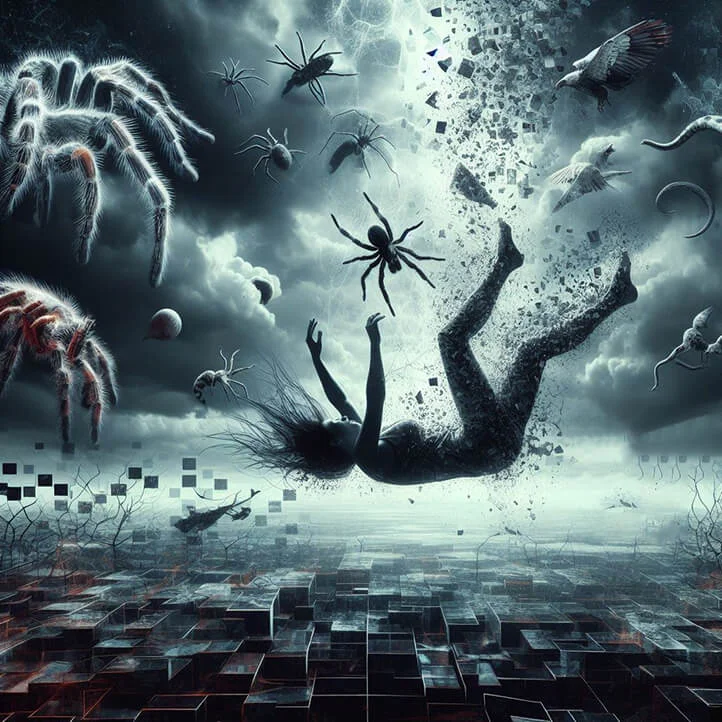
Cultural and Historical Aspects
Hypnagogic hallucinations are not just a mysterious phenomenon of interest to scientists. For centuries, they have had a profound impact on human culture, religion, and art, stirring minds and inspiring creators. The strange images and sensations born on the borderline between wakefulness and sleep have always attracted the inquisitive gaze of those seeking to unravel the mysteries of human existence.
The perception and interpretation of hypnagogic hallucinations have changed greatly depending on cultural and historical contexts. In some traditions, they were seen as something sacred—messages from gods, prophetic visions, or signs of high spiritual development. In others, these experiences were met with caution and distrust, associated with madness or witchcraft. However, regardless of interpretation, hypnagogic hallucinations have left an indelible mark on humanity’s cultural heritage.
Perception in Different Cultures
In some cultures, hypnagogic hallucinations were viewed as something mystical or supernatural:
- In ancient shamanic traditions, they were associated with communication with spirits or journeys to otherworldly realms.
- In certain religious teachings, they were interpreted as messages from deities or prophetic visions.
- In Eastern cultures, they were sometimes seen as a sign of high spiritual development.
However, in other cultures, especially in modern Western society, hypnagogic hallucinations were often viewed with skepticism or fear, associated with mental disorders or drug intoxication.
Connection to Mystical Experiences and Religious Teachings
Many well-known mystical experiences and religious visions bear a striking resemblance to hypnagogic hallucinations. For example, the Prophet Muhammad described his first revelations as vivid images and voices that he heard in the transitional state between sleep and wakefulness.
In Christian tradition, there are numerous descriptions of saints’ visions that can be interpreted as hypnagogic hallucinations. For instance, the visions of Hildegard of Bingen or Catherine of Siena share much in common with this phenomenon.
Some researchers suggest that many religious and mystical experiences may have actually been the result of hypnagogic hallucinations, which, in that era, were interpreted as divine revelations.
Famous Individuals Who Experienced Hypnagogic Hallucinations
Throughout history, many prominent figures in science, art, and literature have reported experiences resembling hypnagogic hallucinations:
- The famous physicist Nikola Tesla described vivid images and ideas that came to him in the transitional state between wakefulness and sleep. He claimed that many of his inventions were inspired by such hallucinations.
- Writer Robert Louis Stevenson drew inspiration for his stories from the strange images he saw in a hypnagogic state. His famous novella “Strange Case of Dr. Jekyll and Mr. Hyde” was inspired by one such hallucination.
- Artist Salvador Dalí used techniques to induce hypnagogic hallucinations to create his surreal paintings. He called this the “paranoiac-critical method” and considered it a source of creative inspiration.
- Writer and philosopher Aldous Huxley experimented with hypnagogic states and described them in his works, such as the essay “The Doors of Perception.”
Thus, hypnagogic hallucinations hold a special place in the history of human culture, sparking the imagination and inspiring many prominent individuals to creative achievements.
Mythology and Folklore
The images and plots present in hypnagogic hallucinations are often reflected in mythology and folklore traditions of various peoples. For example:
- Visions of night demons or spirits visiting people in their sleep are found in many cultures and may be related to hypnagogic experiences.
- Legends about soul journeys outside the body during sleep or “prophetic dreams” may have arisen from the experience of intense hypnagogic hallucinations.
- The images of enormous beings, monsters, or strange landscapes typical of many folklore tales resemble hypnagogic hallucinations with distorted sizes and proportions.
Thus, hypnagogic hallucinations are deeply rooted in humanity’s cultural heritage, leaving their mark on mythology, religion, and art.

How to Get Rid of Hypnagogic Hallucinations
For some people, hypnagogic hallucinations can cause anxiety or fear, especially if they are very intense or accompanied by unpleasant sensations. In such cases, a reasonable question arises: how can one get rid of this phenomenon? While hypnagogic hallucinations themselves are not dangerous, certain methods can help reduce their frequency and intensity.
Improving Sleep Hygiene
One of the key factors contributing to hypnagogic hallucinations is a disruption in the sleep schedule. Therefore, it is essential to follow healthy sleep hygiene principles:
- Maintain a regular sleep and wake schedule;
- Ensure a comfortable environment in the bedroom (optimal temperature, darkness);
- Avoid using electronic devices before bed;
- Limit caffeine and other stimulants in the evening.
Following these recommendations will help improve sleep quality and reduce the likelihood of hypnagogic experiences.
Managing Stress
Since stress is one of the psychological factors that trigger hypnagogic hallucinations, it is important to learn how to manage it effectively. This can be done through various techniques such as:
- Meditation before bed and breathing exercises;
- Yoga or other types of physical activity;
- Progressive muscle relaxation;
- Cognitive-behavioral therapy.
Reducing stress levels will help restore balance in brain function and decrease the frequency of hypnagogic phenomena.
Lifestyle Changes
In some cases, changing certain habits and aspects of lifestyle can also help reduce the intensity of hypnagogic hallucinations:
- Balanced diet and adequate water intake;
- Moderate physical exercise;
- Avoiding alcohol and drug use;
- Timely treatment of conditions related to sleep disorders.
A healthy lifestyle contributes to overall physical and mental well-being, which can positively affect the frequency of hypnagogic experiences.
Professional Help
If hypnagogic hallucinations become very intense, frightening, or disrupt daily life, professional medical help should be sought. A doctor can conduct an examination and determine if these phenomena are related to any neurological or mental disorders that require treatment. In some cases, medication may be prescribed to reduce the frequency and intensity of hallucinations.
It is important to understand that hypnagogic hallucinations are a normal phenomenon that does not pose a health risk. However, if they cause significant discomfort or anxiety, there are ways to reduce their impact and occurrence.
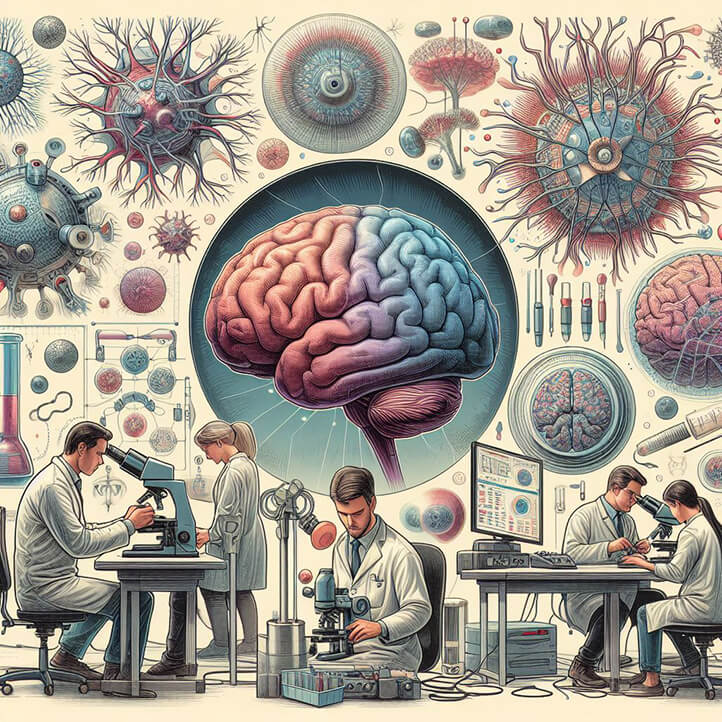
Scientific Research
For a long time, hypnagogic hallucinations remained in the shadows, surrounded by mystery and prejudice. However, with the development of science and modern research methods, this mysterious phenomenon has finally been studied in detail. Scientists from various fields, from neurobiology to psychology, have united their efforts to unravel the secrets of these bizarre experiences on the edge of wakefulness and sleep.
Using advanced technologies such as functional magnetic resonance imaging (fMRI) and electroencephalography (EEG), researchers can peer inside the working brain and track changes in its activity during hypnagogic hallucinations. In addition, laboratory experiments, surveys, and interviews with participants, genetic research, and more are used. These multifaceted approaches help create a fuller picture of this phenomenon and understand its complex mechanisms.
Methods of Studying Hypnagogic Hallucinations
- Surveys and interviews with participants who regularly experience such states allow detailed descriptions of their experiences, emotions, and perceptions.
- Laboratory experiments measuring brain activity (EEG, fMRI) during the transition to sleep help identify the neural correlates of hypnagogic hallucinations.
- Inducing hypnagogic hallucinations using special techniques (e.g., sleep deprivation, borderline states of consciousness) allows for studying this phenomenon in controlled conditions.
- Genetic research aims to identify genes and mutations that may be associated with a predisposition to hypnagogic hallucinations.
- Studying the influence of various factors (stress, medications, illnesses) on the occurrence of hallucinations helps better understand their causes and mechanisms.
Recent Discoveries in This Field
Thanks to modern research, scientists have been able to gain deeper insights into the mechanisms underlying hypnagogic hallucinations:
- A link has been identified between hypnagogic hallucinations and the activity of certain brain areas, such as the visual cortex, auditory centers, and regions associated with image formation (e.g., hippocampus, amygdala).
- The role of neurotransmitters (acetylcholine, dopamine, serotonin) in the occurrence of this phenomenon and their interaction with various receptors at different sleep stages has been discovered.
- A relationship has been established between hypnagogic hallucinations and certain sleep modes, such as the rapid eye movement (REM) phase and slow-wave sleep. Particularly interesting is the transition between these stages.
- Genetic and neurobiological factors, such as mutations in genes regulating sleep and wakefulness, have been identified, which may predispose some people to more frequent hypnagogic hallucinations.
Future Research Directions
Despite the progress made in understanding hypnagogic hallucinations, many questions remain unanswered:
- Studying the role of various neural networks and their interactions in forming hypnagogic images using modern brain imaging methods.
- Investigating the connection between hypnagogic hallucinations, creative thinking, imagination, and other cognitive processes for better understanding creativity mechanisms.
- Developing methods to better control and manage the hypnagogic state with potential practical applications (e.g., stimulating creative thinking).
- Exploring the potential role of hypnagogic hallucinations in the development of some mental disorders, such as hallucinations, delusions, and perception disorders, for more effective diagnosis and therapy.
- Further research on the cultural and historical aspects of this phenomenon for a deeper understanding of its significance in human experience, as well as its connection to religion, art, and creativity.
- Studying individual differences in the perception and experience of hypnagogic hallucinations, as well as factors affecting these differences (personality traits, life experiences, cultural context).
- Developing new methods of inducing and observing hypnagogic hallucinations in controlled conditions, such as virtual reality or special sensory deprivation chambers.
These and many other research areas will help uncover the mysteries of hypnagogic hallucinations and their role in the functioning of the human brain, consciousness, and psyche.
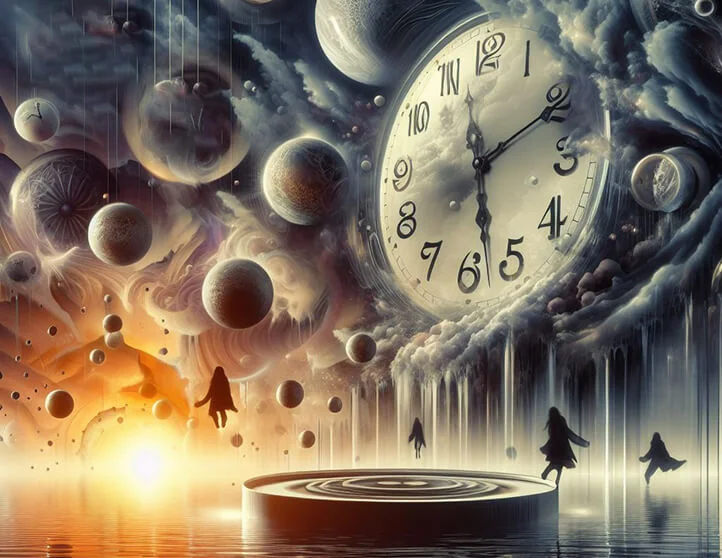
Conclusion
Hypnagogic hallucinations are an amazing and mysterious phenomenon that attracts the attention of both scientists and those interested in the mysteries of the human mind and consciousness.
Understanding the nature of these experiences helps to better comprehend the processes occurring in our brain during the transition from wakefulness to sleep, as well as their connection to aspects such as creativity, imagination, and perception of reality.
Moreover, studying hypnagogic hallucinations can have practical significance in various fields:
- In medicine – for better understanding and treatment of some sleep disorders and mental illnesses associated with hallucinations.
- In psychology and cognitive sciences – for studying mechanisms of image formation, perception, and creativity.
- In creative fields – for developing new methods of idea generation and inspiration based on the use of hypnagogic states.
- In spiritual and religious practices – for a deeper understanding of mystical experiences and altered states of consciousness.
However, beyond the practical significance, the study of hypnagogic hallucinations is also important for expanding our knowledge of the fundamental aspects of human existence. These experiences remind us that our perception of reality is not absolute and unchanging but depends on complex processes occurring in the brain.
Hypnagogic hallucinations demonstrate the potential of our mind to create vivid, bizarre images and sensations that can feel more real than reality itself. They open the door to a mysterious world between wakefulness and sleep, where the boundaries between the real and the imagined become blurred.
By studying this remarkable phenomenon, we not only deepen our understanding of brain function but also gain the opportunity to explore the depths of the human psyche, imagination, and creative potential. Hypnagogic hallucinations remind us of the inexhaustible potential of the human mind and underscore the need for further study of those mysterious areas that still await their discovery.
